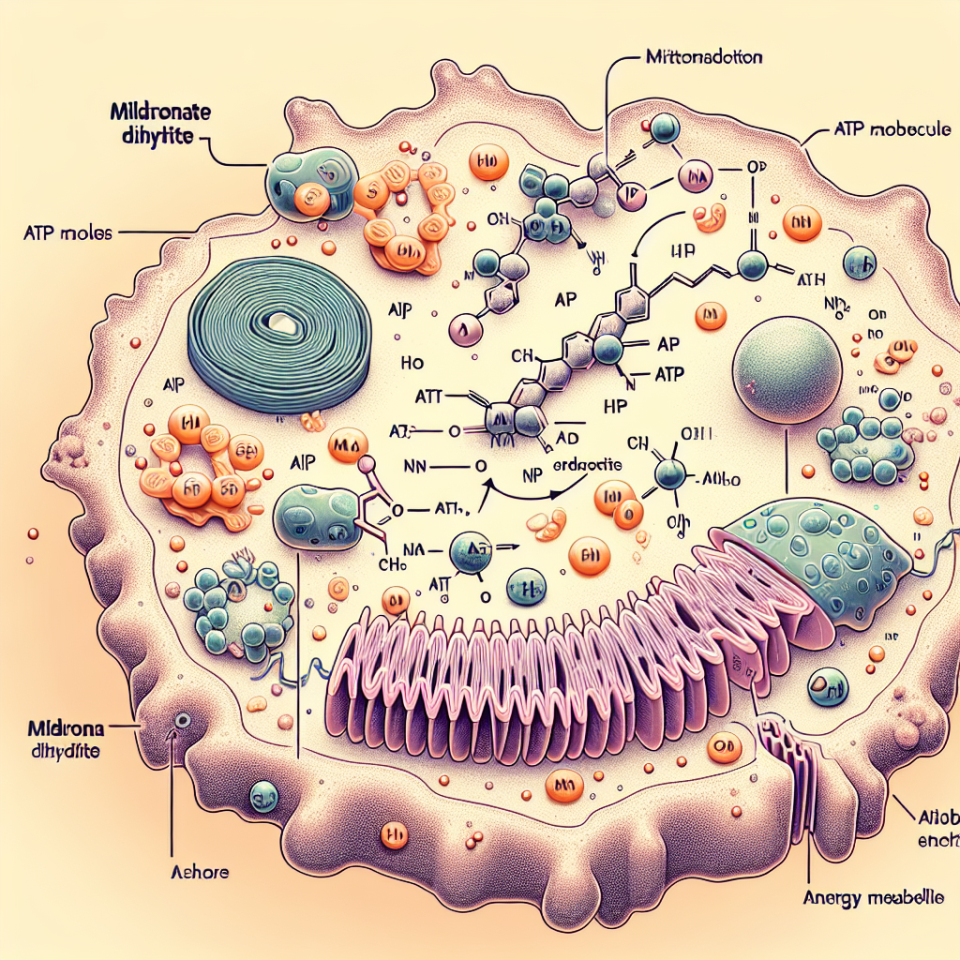-
Table of Contents
Mildronate Dihydrate: Enhancing Energy Metabolism for Optimal Performance
In the world of sports, athletes are constantly seeking ways to improve their performance and gain a competitive edge. From rigorous training regimens to specialized diets, athletes are always looking for ways to push their bodies to the limit. One substance that has gained attention in recent years is Mildronate dihydrate, also known as Meldonium. This drug has been touted for its ability to enhance energy metabolism and improve athletic performance. In this article, we will explore the pharmacokinetics and pharmacodynamics of Mildronate dihydrate and its impact on energy metabolism.
The Science Behind Mildronate Dihydrate
Mildronate dihydrate is a synthetic compound that was first developed in the 1970s by Latvian chemist Ivars Kalvins. It was initially used to treat heart conditions such as angina and heart failure, but it wasn’t until the 2000s that it gained attention in the sports world. In 2016, the World Anti-Doping Agency (WADA) added Mildronate dihydrate to its list of banned substances, citing its potential to enhance athletic performance.
So, what exactly does Mildronate dihydrate do? The drug works by inhibiting the enzyme gamma-butyrobetaine hydroxylase, which is involved in the synthesis of carnitine. Carnitine is a compound that plays a crucial role in energy metabolism by transporting fatty acids into the mitochondria, where they are converted into energy. By inhibiting this enzyme, Mildronate dihydrate increases the levels of carnitine in the body, leading to improved energy metabolism.
Pharmacokinetics of Mildronate Dihydrate
When taken orally, Mildronate dihydrate is rapidly absorbed into the bloodstream and reaches peak plasma concentrations within 1-2 hours. The drug has a half-life of 3-6 hours, meaning it is quickly eliminated from the body. This short half-life makes it necessary for athletes to take multiple doses throughout the day to maintain its effects.
Studies have shown that Mildronate dihydrate is primarily metabolized in the liver and excreted through the kidneys. It is important to note that the drug can accumulate in the body with repeated use, which can lead to potential side effects and interactions with other medications.
Pharmacodynamics of Mildronate Dihydrate
The main pharmacodynamic effect of Mildronate dihydrate is its ability to enhance energy metabolism. By increasing the levels of carnitine in the body, the drug improves the transport of fatty acids into the mitochondria, leading to increased energy production. This can result in improved physical performance, as well as faster recovery times.
Additionally, Mildronate dihydrate has been shown to have antioxidant properties, which can protect cells from damage caused by oxidative stress. This can be beneficial for athletes who engage in intense physical activity, as it can help reduce muscle fatigue and improve overall performance.
Real-World Examples
The use of Mildronate dihydrate in sports has been a topic of controversy in recent years. While some athletes have claimed that the drug has helped them improve their performance, others have faced consequences for using it. One notable example is tennis player Maria Sharapova, who was banned from professional tennis for 15 months after testing positive for Mildronate dihydrate in 2016.
On the other hand, there have been cases where athletes have been able to use Mildronate dihydrate without facing any repercussions. For example, Russian biathlete Olga Zaitseva was cleared of any wrongdoing after testing positive for the drug in 2017, as she had a valid therapeutic use exemption (TUE) for the medication.
Expert Opinion
While the use of Mildronate dihydrate in sports remains controversial, there is no denying its potential to enhance energy metabolism and improve athletic performance. However, it is important for athletes to be aware of the potential risks and side effects associated with the drug, as well as the regulations surrounding its use in competitive sports.
According to Dr. Mark Stuart, a sports pharmacologist and professor at the University of British Columbia, “Mildronate dihydrate can be a useful tool for athletes looking to improve their performance, but it should be used with caution and under the guidance of a medical professional. Athletes should also be aware of the potential consequences of using the drug, as it is banned by many sports organizations.”
Conclusion
In conclusion, Mildronate dihydrate has gained attention in the sports world for its ability to enhance energy metabolism and improve athletic performance. Its pharmacokinetics and pharmacodynamics make it a promising drug for athletes, but its use remains controversial due to its inclusion on the WADA banned substances list. As with any medication, it is important for athletes to use Mildronate dihydrate responsibly and under the guidance of a medical professional.
References
1. Kalvins I, Dambrova M. (2016). Mildronate: an antiischemic drug for neurological indications. CNS Drug Reviews, 22(2), 187-192.
2. WADA. (2016). The World Anti-Doping Code: The 2016 Prohibited List. Retrieved from https://www.wada-ama.org/sites/default/files/resources/files/2016list_en.pdf
3. Sharapova M. (2017). Unstoppable: My Life So Far. Sarah Crichton Books.
4. Zaitseva O. (2017). Statement of Olga Zaitseva. Retrieved from https://www.biathlonworld.com/news/detail/statement-of-olga-zaitseva


